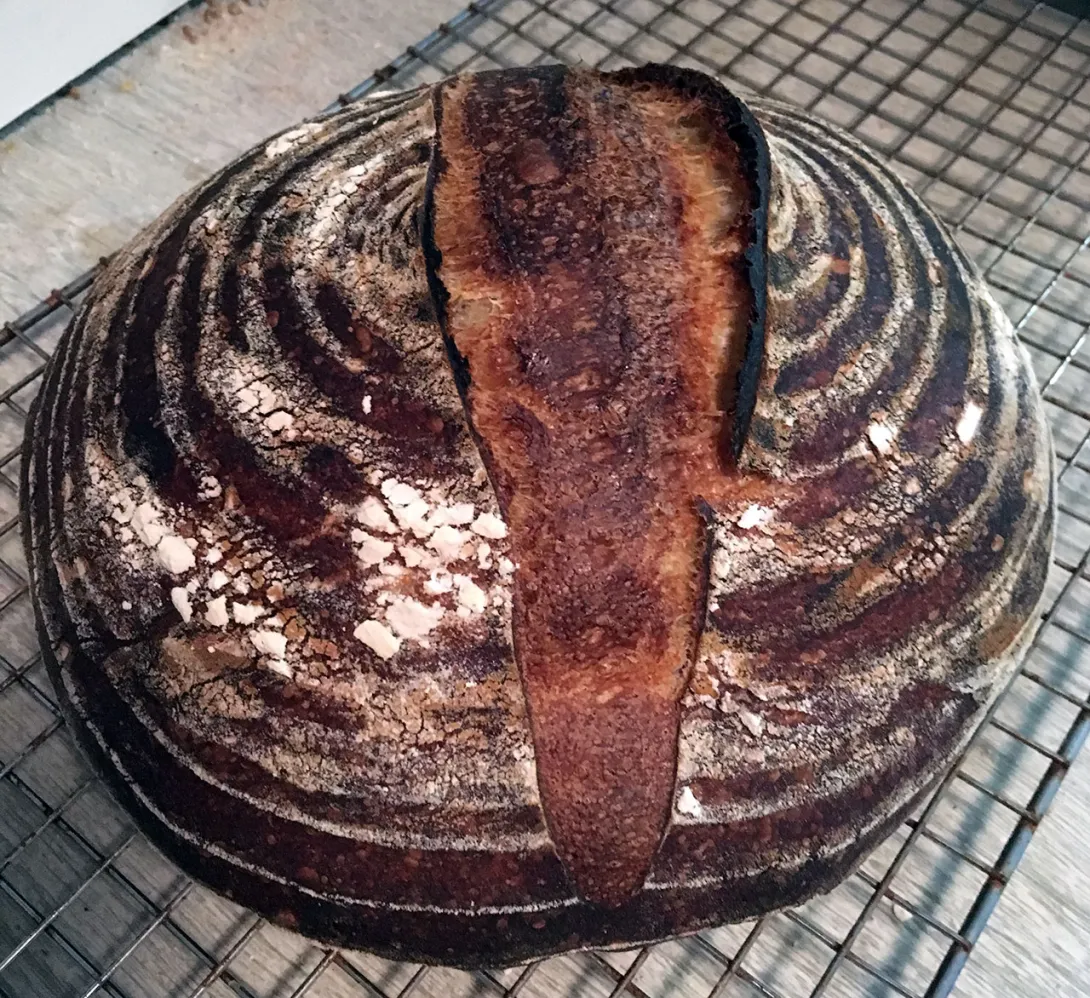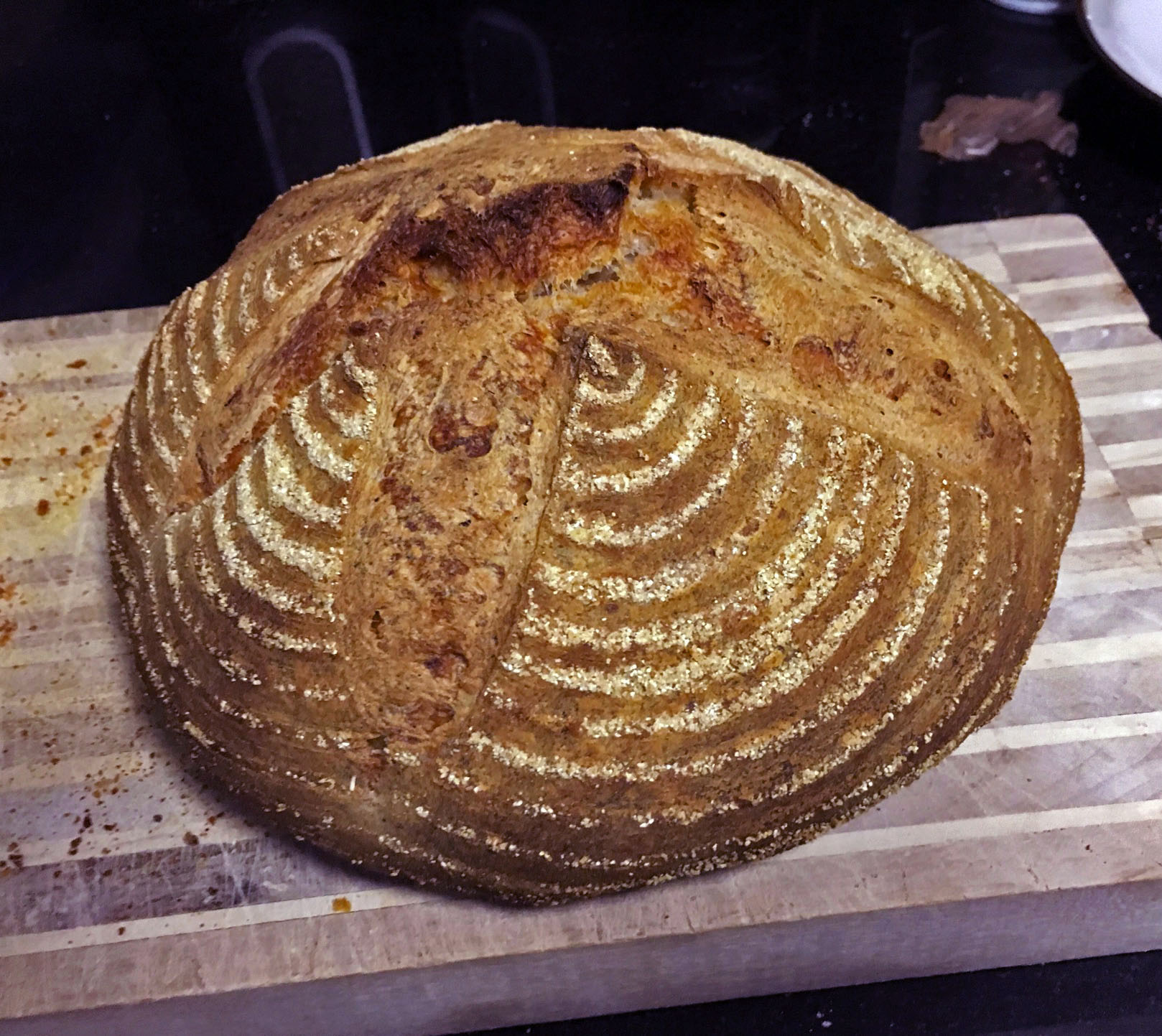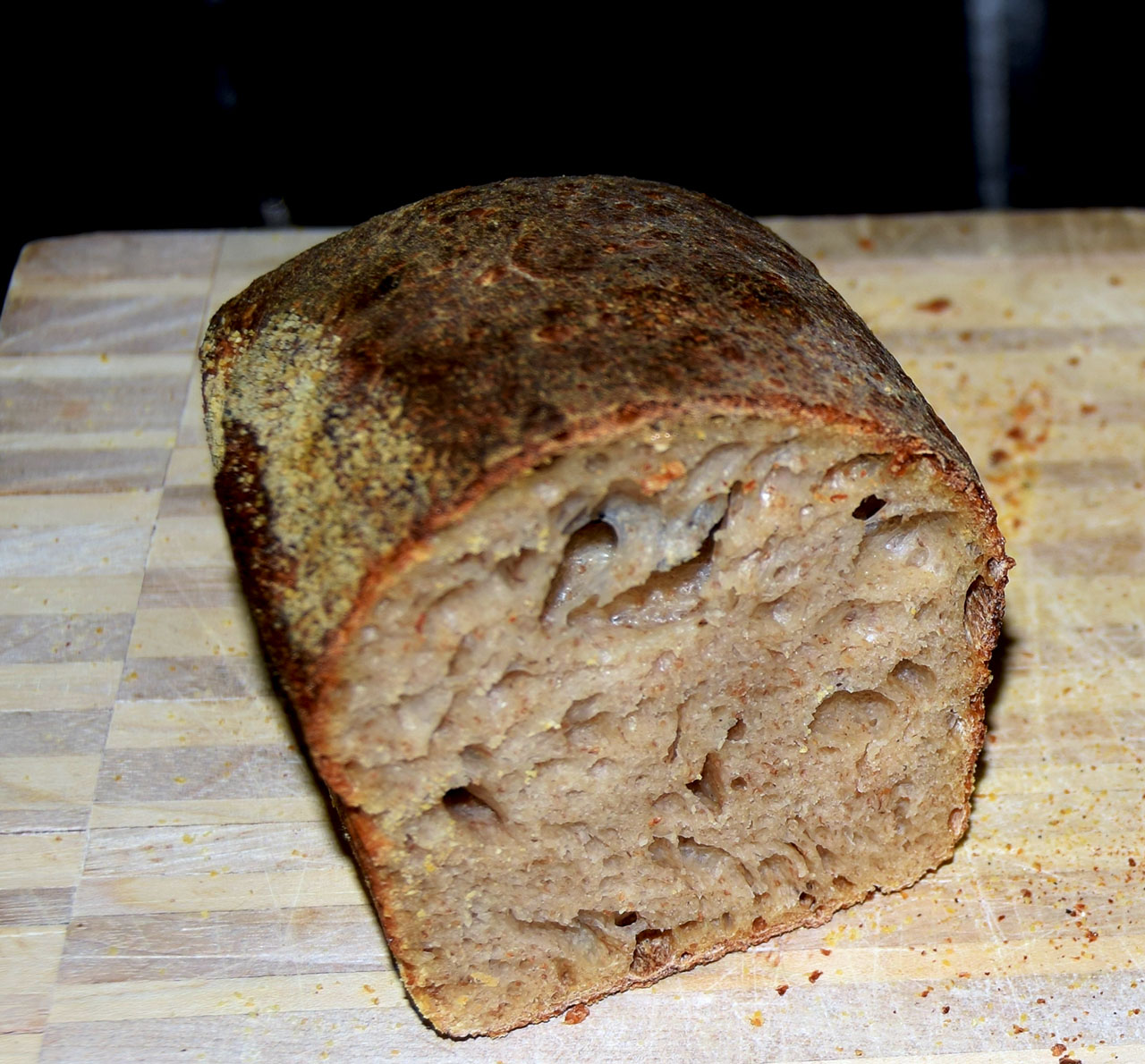Back to straight sourdough

After a brief dalliance with PR's whole wheat sandwich bread, I'm back to my traditional sourdough loaf (starter + water + flour + salt). These were around 80% hydration.The sandwich bread was delicious, but didn't keep nearly as well as the traditional loaf.










